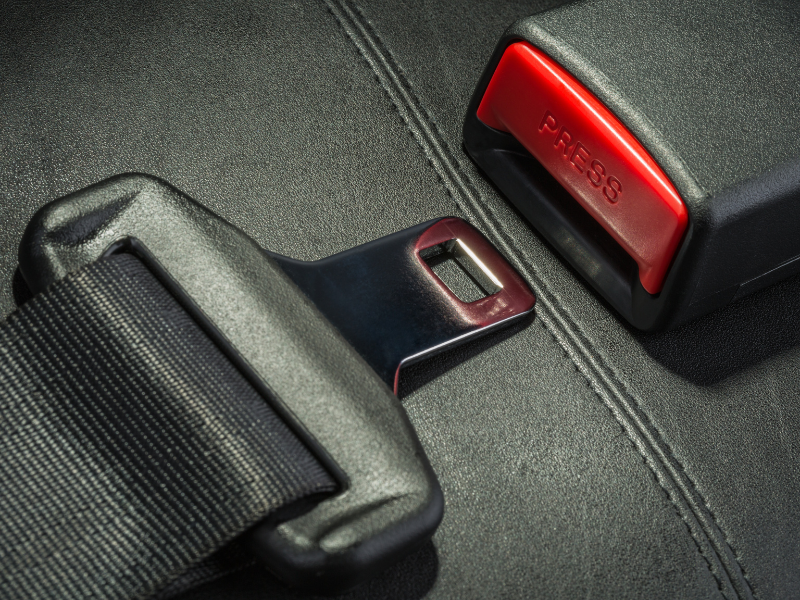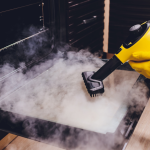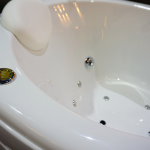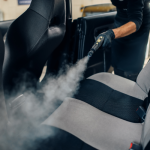Dust, dirt, weather fallout, paint chipping, and other damage – it’s obvious that cars get dirty very quickly on the outside, and it’s very noticeable.
However, it may not be so obvious that the interior of your car is also exposed to strong dirt, the development of microorganisms, and even mold.
Certainly, when cleaning, you pay a lot of attention to cleaning the upholstery in the car. But why do you skip cleaning the equally important seat belts? Neglect in this area can lead to the growth of mold spores and the release of a disgusting smell in the car. Today we will present a few ways to clean the seat belts in your car to get rid of stubborn stains and prevent the growth of mold.
What are seat belts made of?
If you’ve ever wondered how the tape of seat belts is woven, you should know that – contrary to popular opinion – the way it’s woven can save your life. The key here is high tensile strength.
Currently, seat belts are made entirely of polyester. The threads here are more compact, which results in a longer lifespan of the belts.
Why – and do they really – seat belts get so dirty?
Every time you get into the car, you touch the seat belt. Even if you wash your hands according to the instructions, you will never be able to completely get rid of the tiny germs and bacteria that settle on them throughout the day. When you use a seat belt, these germs and bacteria easily transfer to it and stay there until they are cleaned.
Can seat belts be cleaned?
The most frequently used, but at the same time probably the least considered element during car cleaning is the seat belt.
In reality, neither you nor the person washing the car pay attention to them during a visit to the car wash. That’s a mistake! Seat belts must be cleaned and disinfected regularly.
Cleaning solution and cleaning materials
Use a fabric cleaner or general-purpose cleaner to clean seat belts. These preparations are designed for most delicate materials and are safe to use. However, make sure they do not contain bleach. You can also use other, alternative cleaning agents, such as vinegar, wet wipes, or dish soap.
Although vinegar and vinegar-based cleaners remove unpleasant odors well, it is recommended to use them sparingly. Acetic acid can damage the material and weaken the strength of the seat belt. You can mix part water with part vinegar in a spray bottle to get a suitably diluted solution.
Baby wipes are also a good solution, but only for removing surface stains.
Colorless dish soap is also a great solution for washing the belts in your car.
How to clean seat belts in a car?
Step 1: Gather the necessary materials
Metal clips
You need a tool to secure the belt from retracting. For this task, you need something stronger than a paper clip. A ChicClip clip used to secure chip bags will do.
Cleaning agent
You can use a fabric cleaner or combine liquid soap and warm water in a spray bottle. Avoid substances with too acidic a composition, as this can cause structural damage to the seat belt.
For the best results, consider using a high-quality interior cleaner that will restore the original surface of the seat belts.
Cleaning brush
Since seat belts are made of polyester, they are quite durable. However, use a soft brush with delicate bristles, as you do not want to potentially damage any connecting threads. Remember, most of the work should be done by the cleaning agent, and only any remaining dirt can be removed by putting a bit of force into it.
Microfiber Towel
You can quickly dry the straps with microfiber towels, without exposing them to abrasive damage. Standard cotton or cloth towels can cause rubbing or tearing of the polyester threads of the belt, as they are often much rougher. Microfiber towels are so gentle that there is no risk of accidental belt damage.
Step 2: Extend the safety belt
To make sure that each belt will be thoroughly cleaned, focus on only one belt at a time. Choose the belt you want to start with, and slowly extend the belt to avoid damaging the winding mechanisms, and continue extending until you encounter resistance. To prevent the safety belt from retracting to its default position, firmly clamp the buckle at the top of the safety belt, where the belt roller is.
Step 3: Use a cleaning agent
Apply your chosen cleaning agent to the safety belt. Avoid over-soaking the belt, but make sure all areas of the material are evenly covered with a layer of the cleaning agent. Don’t forget to turn over the belt to clean its bottom side as well. Allow the cleaning agent to work by leaving it on the belt for three to five minutes.
Step 4: Use a brush
Use a soft brush to scrub the belt and remove any dirt, starting from the top of the belt and moving down. Avoid circular brush movements or moving back and forth. Use the brush as if you were combing long hair. After such brushing, the belt should look much better. If stubborn stains still persist, you can reapply a second layer of the cleaning agent and concentrate your efforts on this specific area. If you are not using a very strong cleaning agent, the last two steps may need to be repeated several times.
Step 5: Dry the belt
Repeat step four using a clean, dry microfiber towel and perform the same motion: starting from the top of the belt and moving down in one stroke. To quickly dry both sides of the belt, you can wrap it in a towel. Hold the towel firmly and remove excess moisture as soon as you can. It is unlikely that the microfiber will damage the belt, but just in case, apply moderate pressure.
Wait for the belt to dry completely before removing the clamp.
Best devices for cleaning safety belts
The most effective solution for cleaning safety belts are hot water extractors or steam machines. Steam cleaners have the ability to remove any odors, stains, and kill mold without the need for aggressive chemicals. The combination of high temperature and pressure ensures excellent cleaning of the entire belt. Small steam particles can penetrate through the belt threads, cleaning it from the inside out.
How to clean safety belts with steam?
Prepare the belt for cleaning
Extend the safety belt to expose its full length. Steam cleaning of the safety belt
Using an upholstery tool, move down the belt, slowly steaming and vacuuming it. Maintain a moderate speed so that the steam effectively dissolves the dirt and the vacuum removes moisture.
Fortador Steam Vacuums for Cleaning Safety Belts
If you are looking for a suitable steam machine that will provide excellent results during deep cleaning, consider Fortador steam vacuums. In the offer, you will find compact models like Volt Mini and Volt Electra as well as more industrial options like PRO Max and Fortador PRO, which will meet your needs.
Our machines are environmentally friendly and do not require the use of aggressive chemicals. Thanks to touchscreen technology, they are easy to use. Each machine is equipped with many accessories, such as extendable hoses, cleaning brushes, and many others that will help you thoroughly clean your vehicle or home.




